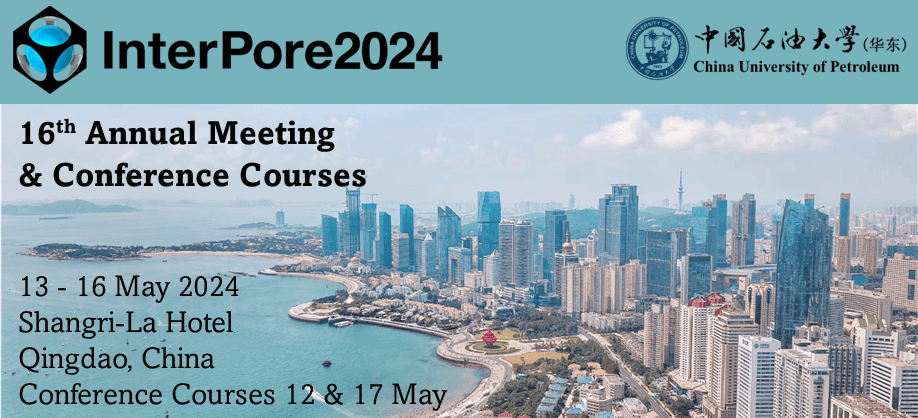Speaker
Description
Dissolution of bubbles in porous media affects many important geological and engineering processes, such as CO$_{2}$ sequestration, hydrogen storage, fuel cell water management and Li-battery electrolyte filling. However, although dissolution of continuous gas phase has been investigated extensively, there is still no universal theory for static bubble dissolution kinetics in porous media. We thus conduct experimental and theoretical investigation on the universal dissolution theory for bubbles in porous media.
We found that porous structure does not only change the effective diffusivity, but also regulate the characteristic mass transfer distance and surface area. In open space, the mass transfer area (S) of the bubble is the surface area of the bubble itself, and the characteristic mass transfer distance is proportional to the bubble radius R 1. These result in V~t scaling in 2-d and V$^{2/3}$~t scaling in 3-d in quasi-steady state, where V is the dissolved volume. However, in porous media, both its mass transfer area and its characteristic mass transfer distance are re-regulated by the porous structure. The concentration in the pore body is almost uniform, while the concentration gradient is concentrated along the throat (Fig.1a). Consequently, the characteristic mass transfer distance is determined by throat length (L$_{t}$), and effective mass transfer area is determined by the throat cross section area (A$_{t}$) and available number of throats (n).
For a bubble in a single pore, n is a constant, resulting in a linear V~t scaling. For a large bubble that occupies many pores, n depends on the shape of the bubble. If the bubble is completely liner, n is proportional to the volume of the bubble V, so we can deduce lnV~t. While if the bubble is a bulk, n$^{2}$ is proportional to V, leading to a V$^{1/2}$~t scaling. These conclusions have been well verified by experiments. (Fig.1b).
In addition ,we investigate the dissolution of CO$_{2}$ bubble in porous media under gravity field, where the Rayleigh-Darcy convection can be induced in the liquid phase as dissolved CO$_{2}$ increases water density. In case that the mass transfer is dominated by convection, the bubble dissolution rate becomes proportional to the flux of fresh water through the bubble. For an isolated CO$_{2}$ bubble in an infinitely-large porous medium, the flux is determined by the number of pores it occupies perpendicular to the gravitational field n_vert. Therefore, for a CO$_{2}$ bubble in a single pore (Fig.1c), the dissolution is in constant rate (V~t), that is experimentally examined.
In summary, we establish the scaling laws for bubble dissolution in porous media. We show that bubble dissolution kinetics in porous media becomes very different from that in bulk, not only in the value of diffusivity, but (more significantly) also in the volume-time scaling, because porous structure regulates the mass transfer length and area.

| References | 1. P.S. Epstein and M.S.Plesset, On the Stability of Gas Bubble in Liquid-Gas Solutions. Chen. Phys. 18,1505(1950). 2. Yuehongjiang Yu, Chuanxi Wang, Junning Liu, Sheng Mao, Yashar Mehmani, and Ke Xu, Bubble Coarsening Kinetics in Porous Media. Geophysical Research Letters. 10.1029/2022GL100757 |
|---|---|
| Country | China |
| Conference Proceedings | I am not interested in having my paper published in the proceedings |
| Acceptance of the Terms & Conditions | Click here to agree |




.jpg)
